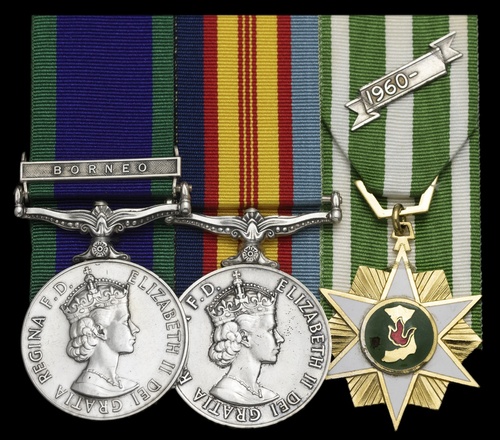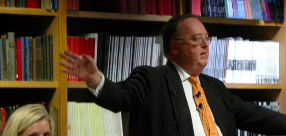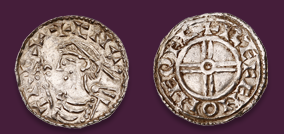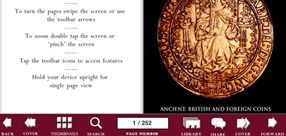
Auction: 25001 - Orders, Decorations and Medals
Lot: 103
(x) A rare Borneo and Vietnam War Special Forces group of three awarded to Sergeant W. H. 'Bill' Roods, Australian Special Air Service (S.A.S.), a gallant and skilful patrol leader who implemented telling Claymore mine detonations against Viet Cong insurgents
General Service 1962-2007, 1 clasp, Borneo (15340 W. H. Roods); Vietnam 1967 (15340 W. H. Roods); South Vietnam campaign service, clasp, '1960-', the reverse officially inscribed, '15340 W. H. Roods', the second with a scratch over service number and the last with slightly chipped obverse enamel, otherwise good very fine (3)
William Henry Roods was born in Wauchope, New South Wales on 6 November 1939 and enlisted in the Australian Regular Army in Brisbane in August 1959. Having then served in the 3rd and 4th Battalions of the Royal Australian Regiment, he won selection for the Australian Special Air Service in the summer of 1961, when he joined the 1st S.A.S. Company and qualified for his parachute badge.
Having then served in Papua New Guinea and passed a 'Recondo' course, in addition to roping, signal and canoe/small craft handlers' courses, he was deployed to the Borneo operations as a Corporal and Patrol Leader in 2 Squadron S.A.S. in January-August 1966. In late April/early May he led a patrol to explore whether the enemy had re-established a base but could find no evidence to support that suspicion; he appears in TV footage of another S.A.S. patrol held by the Australian War Memorial.
Advanced to Sergeant, he was next emplaned for operations with 1 Squadron S.A.S. in South Vietnam, in which theatre of war he remained actively employed from March 1967 to February 1968. 'Actively' being the operative word, as confirmed in Phantoms of the Jungle:
'These initial ambushed had been initiated by rifle fire and had been markedly more successful than the earlier reconnaissance patrols. However, the squadron had obtained a quantity of Claymore mines and, influenced by the experience of the ex-2 Squadron men who had used mines in Sarawak, it was decided to use the Claymores in S.A.S. ambushes. At first some of the patrols had no more than two Claymores, but the increasing effectiveness of the ambushes was startling.
Between 26 and 30 April [1967] five patrols (Roods, Stevenson, Farley, Hindson and Shaw) were deployed on ambush missions in an arc stretching from the north west to north east of Nui Dat out to a distance of from ten to fifteen kilometres. The first to gain success was Sergeant Bill (Chester) Roods whose five man patrol was inserted ten kilometres north west of Binh Ba. On 29 April they fired two Claymores at three Viet Cong walking along the track, killing two and wounding a third. A few seconds later more Viet Cong moved into the killing area and the third Claymore, facing down the track, was fired. The patrol quickly withdrew and was credited with five enemy killed and one wounded.'
In his own patrol report, Roods described the victims thus:
'The five men killed were dressed in black. Two were wearing straw hats. At least three were carrying large packs on their backs, one of which was a flower bag. One was seen to be carrying a small unidentified S.M.G., with no woodwork visible. All men were armed but their weapons were not identified. Weapons hear returning fire were of a light calibre, firing single shots.
As the patrol withdrew, at least three men were heard to follow for a short distance. It isn't possible to accurately access the strength of the party, but it was probably about 10-12 including the five killed.'
Accompanying copied reports testify to around a dozen more patrols led by Roods. Infiltration and extraction were by helicopter and the patrols tended to last for two or three days, invariably in harsh jungle conditions. In his report for the above firefight with the Viet Cong, Roods noted the terrain thus:
'Secondary jungle thick with vines and scattered patches of bamboo. Only water was in the main creek. A few leeches were found in the area and the mosquitoes were prevalent at last light.'
It is clear, too, that clandestine surveillance was the primary objective of such patrols, a case in point being the five-man team Roods commanded in the Xuyen Moc sector on 16-19 June 1967. On that occasion he was able to send a detailed report of a large Viet Cong force, including women and children. The men wore blue uniforms and were equipped with a variety of Soviet arms, arms which were brought to bear on an attacking helicopter gunship. The patrol had to be withdrawn early 'as V.C. prevented it from reaching water.'
But Roods also participated in some larger scale offensive patrols, of which he was second-in-command under an officer or senior N.C.O. One such took place on 11-12 December 1967, when his team ambushed a party of Viet Cong with Claymore mines, killing seven of them - 'Patrol searched the bodies then withdrew to LZ and was extracted.'
Roods took his discharge in Brisbane in August 1968 and settled in Broadwater, Western Australia. He subsequently became eligible for the Australian Active Service Medal 1945-75, with 'Malaysia' and 'Vietnam' clasps, the Australian Service Medal 1945-75 with 'PNG' clasp, the Australian Defence Medal and the Anniversary of National Service Medal 1951-72; sold with a file of copied research, including his service record and course reports, in addition to a copy of Roods' reports for 'Patrol 13, 1 S.A.S. Squadron, during its tour of South Vietnam between 1967-68'.
Subject to 5% tax on Hammer Price in addition to 20% VAT on Buyer’s Premium.
Sold for
£2,300
Starting price
£480




